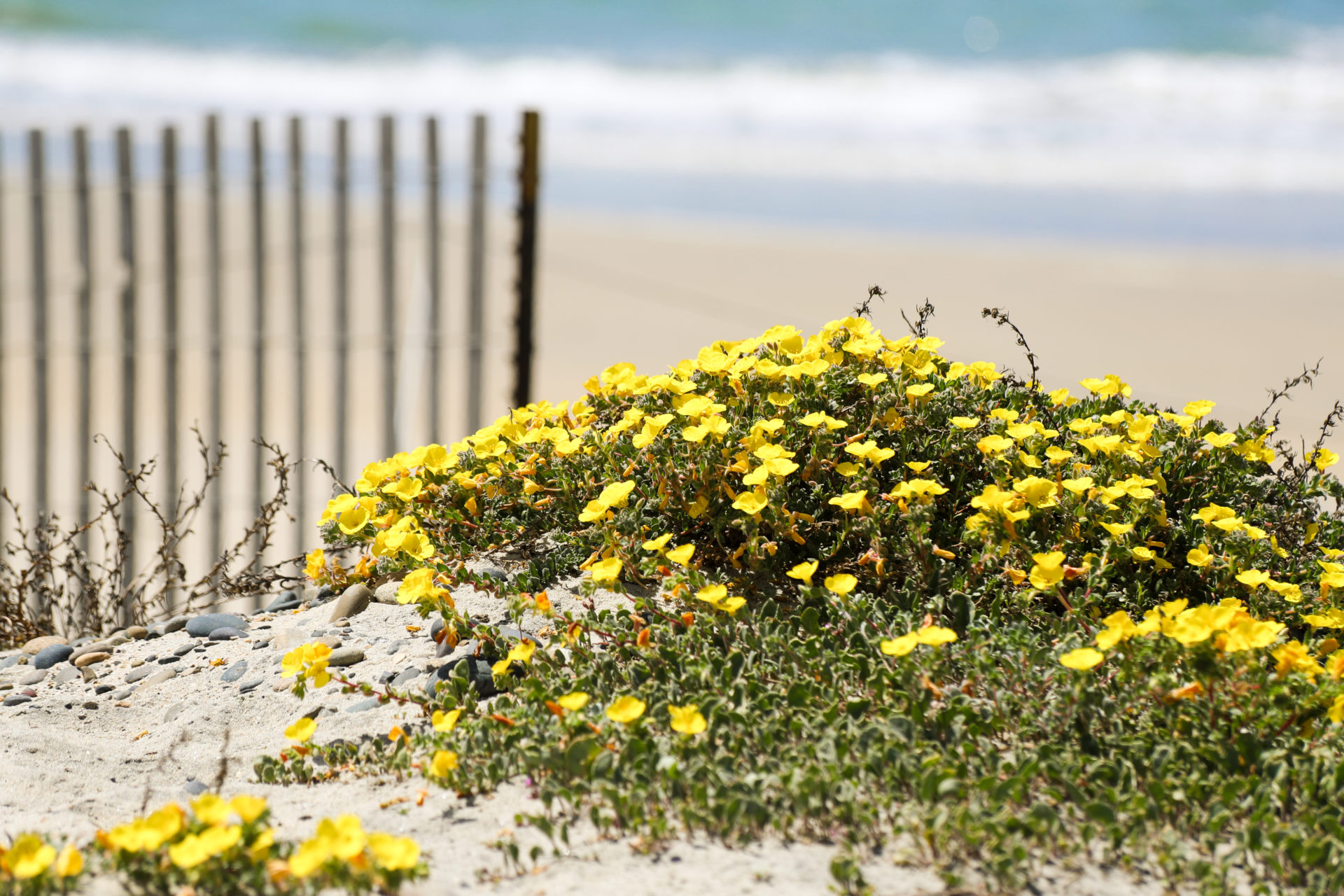San Elijo Lagoon Inlet Facing Possible Closure
Follow ( 0 Followers ) X Follow E-mail : * Follow Unfollow

After winter storm surges, some deposited sands have accumulated and are muting the water flow inside the inlet channel that connects the lagoon to the ocean. The removed sands will be used to rebuild areas of coastal dunes that were carved away by winter waves and high tides at the Cardiff State Beach Living Shoreline.

Above: Recent combinations of winter high tides and storm surges have impacted some areas of the dunes. This was expected. The sand dunes closest to the ocean performed as designed, taking the brunt of the high tides and storm action, ensuring that water does not reach Highway 101 or undercut the road material.
The Cardiff State Beach Living Shoreline is a project led by State of California Coastal Conservancy and City of Encinitas. The City partners with Nature Collective, California Parks & Recreation, UC Los Angeles, Scripps Institution of Oceanography at UC San Diego, and US Fish & Wildlife Service.
With rising sea levels, low-lying coastal areas are prone to flooding — this includes South Coast Highway 101. The sand dunes that were created, beginning in 2019, provide a buffer between the ocean and highway, which contributes to the primary goal of the project — to protect the highway from sea level rise.
Our efforts on this part of the shoreline focus on the creation and ongoing care of indigenous dune habitat for federally endangered species, such as the Western Snowy Plover — a small shorebird that frequently nests, feeds and rests on this beach.

Above: The plants indigenous to these coastal dunes include beach sand verbena and beach primrose (yellow flowers, pictured above). Along with providing an optimal habitat for endangered plant, bird and reptile species, our work also gives everyone the chance to experience an increasingly rare coastal dune habitat.
The presence of vegetation indigenous to this area is also vital in helping to stabilize the dunes by anchoring the sand from withering winds and storm surges. The storm surges are a natural occurrence during Southern California winters, impacting the sand on the beach by leaving a steep bank, or scarp.
The summer sand cycles return some of the sand to the beach. Nature Collective places sand that accumulates in the San Elijo Lagoon inlet channel back onto the beach each spring/summer.
We worked with hundreds of community and local business volunteers who helped to sculpt sands and cobbles, and to install seedlings into the new dunes. If you joined us in these efforts, we hope that you can see the rewards now! You can also help educate visitors to these dunes by becoming a Volunteer Ambassador with Nature Collective. Learn more.
Spring is the best time to visit, so come on over, and view the coastal dune habitat for nature + community.
Follow ( 0 Followers ) X Follow E-mail : * Follow Unfollow
Follow ( 0 Followers ) X Follow E-mail : * Follow Unfollow